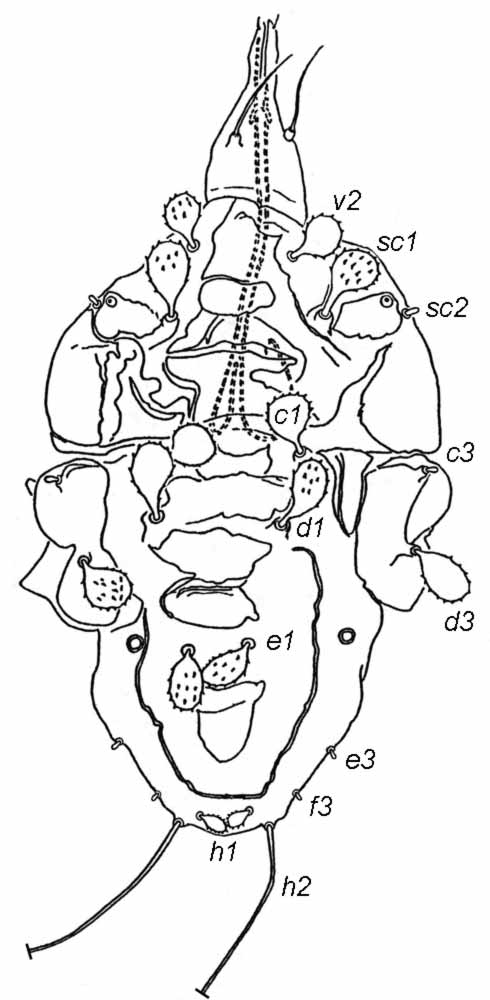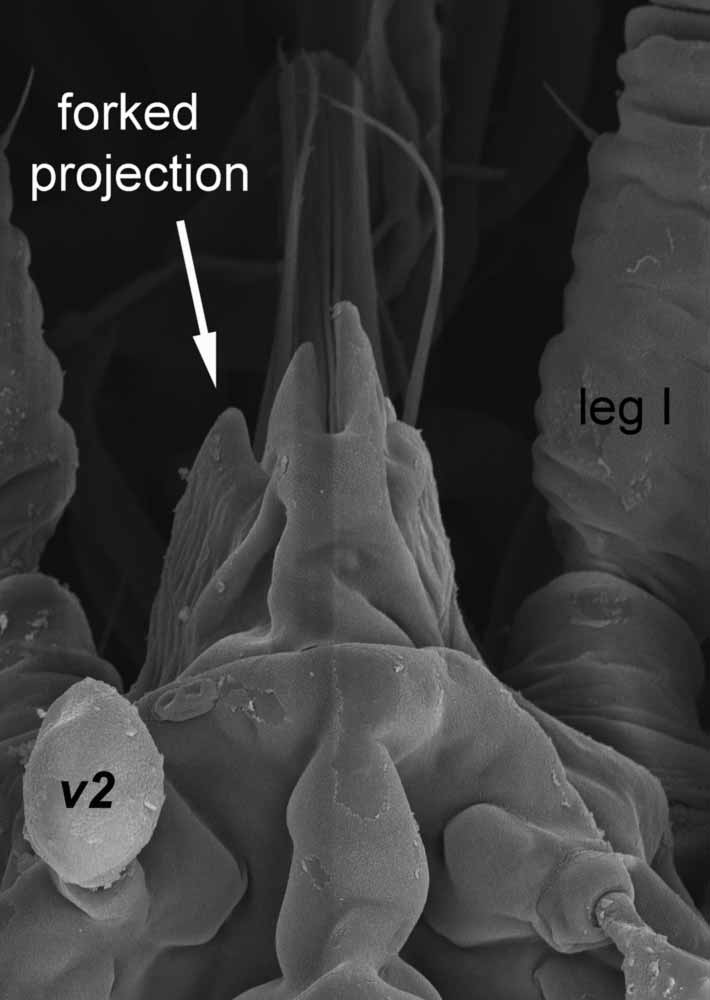Lisaepalpus
|
Fig. 1. Lisaepalpus smileyae female dorsum (after Smiley & Gerson 1995). |
|
Fig. 2. Lisaepalpus smileyae female dorsum (image: Gary Bauchan, USDA-ARS). |
|
Fig. 3. Lisaepalpus smileyae female, anterior projection of prodorsum (image: Gary Bauchan, USDA-ARS). |
Key characters
- setae sc2, c3, e3, f3 minute (Figs. 1-2)
- h2 extremely elongate (Figs. 1-2)
- most dorsal setae large, bulbous (Figs. 1-2)
- anterior prodorsal projection forked, prongs directly anteriorly (Fig. 3)
- ventral, genital and anal plates not developed
- 2 pairs ps setae
- 1 segmented palp
Similar taxa
Tenuipalpus - c2, d2, e2, absent; c1, f2 present/absent; ventral and genital plates well developed, often fused
Number of species
One - L. smileyae
Authority
Smiley and Gerson
Distribution
Australia
Hosts
Alphitonia excelsa (Rhamnaceae)
Same host as Australopalpus alphitoniae
Colour
- beige to pale brown when alive
- dorsum coated with thick protective layer
- eggs pale yellow




